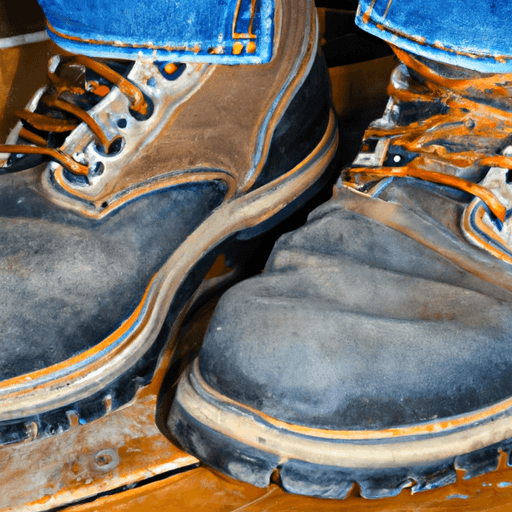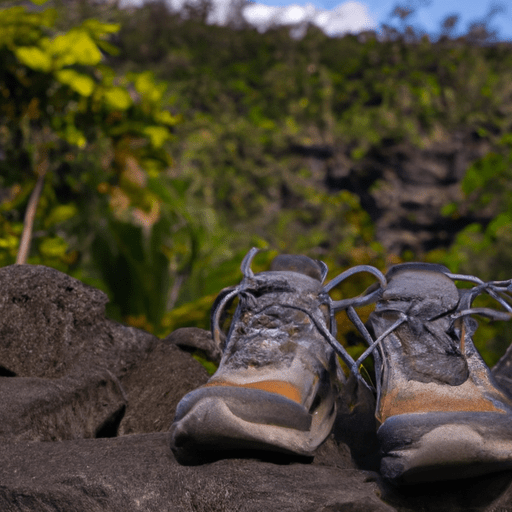Imagine being able to explore and connect with nature, regardless of your physical abilities. That’s the beauty of adaptive hiking. Whether you’re a seasoned hiker or new to the activity, understanding adaptive hiking opens up a world of possibilities for everyone. This article takes a closer look at what adaptive hiking entails, providing insights into how it can empower individuals with disabilities and create inclusive outdoor experiences for all. So, grab your hiking boots and get ready to embark on an extraordinary adventure where every step unlocks a new sense of freedom and discovery.
Understanding Adaptive Hiking
Definition and Concept of Adaptive Hiking
Adaptive hiking, also known as inclusive hiking or accessible hiking, refers to hiking activities that are thoughtfully designed and modified to accommodate individuals with disabilities. It allows everyone, regardless of their physical or cognitive abilities, to experience the joy and benefits of hiking in nature. The concept of adaptive hiking is rooted in the belief that outdoor activities should be accessible and enjoyable for all individuals, irrespective of their disabilities.
Historical Background of Adaptive Hiking
The history of adaptive hiking can be traced back to the late 19th century when the first efforts were made to make outdoor recreation more inclusive. In those early days, hiking trails were often inaccessible to individuals with disabilities, limiting their opportunities for outdoor adventure. However, with the rising awareness of the importance of inclusion and accessibility, organizations began to develop adaptive hiking programs and modify trails to accommodate various disabilities. Today, adaptive hiking has evolved into a popular and rapidly growing movement, with numerous organizations dedicated to promoting inclusive outdoor activities.
Benefits and Importance of Adaptive Hiking
Adaptive hiking offers a multitude of benefits for individuals with disabilities. Physically, it helps improve cardiovascular fitness, muscle strength, and flexibility, enhancing overall physical health and well-being. Moreover, being in nature provides opportunities for stress reduction, mental relaxation, and an escape from the demands of everyday life. From a social perspective, adaptive hiking promotes inclusivity, fostering a sense of belonging and community among participants. It also encourages teamwork and collaboration, as hikers support each other throughout the journey. Additionally, adaptive hiking can provide a boost to self-confidence and empowerment, as individuals overcome obstacles and achieve personal goals.
The Different Types of Adaptive Hiking
Adaptive hiking encompasses various types, each catered to specific disabilities or needs. For visually impaired individuals, guided hikes utilizing sensory cues, such as trail markers with different textures or audio descriptions, enable them to navigate and experience the trails. Hiking for those with mobility impairments often involves the use of specialized wheelchairs or all-terrain vehicles. Cognitive and developmental disabilities can be accommodated through structured hiking programs that focus on sensory engagement and social interaction. Furthermore, adaptive hiking can be customized according to individual requirements, ensuring a safe and enjoyable experience for all.
Adaptive Hiking Equipment and Tools
Standard Equipment for Adaptive Hiking
Just like traditional hiking, adaptive hiking requires specific equipment to ensure safety and comfort during the outdoor adventure. Essential equipment includes sturdy and comfortable hiking boots, appropriate clothing for weather conditions, backpacks for carrying personal items and supplies, and trekking poles or walking sticks for added stability and support. It is important to choose equipment specifically designed to be compatible with adaptive hiking modifications.
Specialized Tools for Different Disabilities
To cater to various disabilities, specialized tools and equipment may be necessary for adaptive hikers. For visually impaired individuals, hiking canes with built-in sonar or tactile interfaces can help detect obstacles along the trail. Mobility-impaired hikers may require all-terrain wheelchairs or off-road prosthetic devices that provide greater mobility on uneven terrains. Additionally, adaptive hiking programs for individuals with cognitive and developmental disabilities might utilize sensory stimulation tools or communication aids to enhance their experience.
Importance of Proper Equipment
Having the appropriate equipment is crucial in ensuring the safety and comfort of adaptive hikers. Ill-fitting or inadequate equipment can lead to discomfort, injuries, or limitations in movement. It is essential to choose equipment that is suitable for the specific disability and hiking requirements. Regular inspection and maintenance of equipment are also necessary to ensure optimal performance and longevity.
How to Choose and Maintain Adaptive Hiking Equipment
When choosing adaptive hiking equipment, it is recommended to consult professionals or experts familiar with the specific disability. They can provide guidance on selecting equipment that meets individual needs and preferences. Additionally, it is essential to follow manufacturer instructions for maintenance and care to prolong the lifespan of the equipment. Regular inspections, cleaning, and repairs should be conducted to ensure the equipment remains in good condition and functions properly.

Training and Preparation for Adaptive Hiking
Physical Fitness Requirements
Preparing for adaptive hiking involves meeting certain physical fitness requirements. While the intensity and difficulty level may vary based on individual abilities, it is important to have a reasonable level of cardiovascular fitness, muscle strength, and endurance. Engaging in exercises that target the major muscle groups, such as walking, swimming, or resistance training, can help prepare the body for the physical demands of hiking.
Acclimation to Hiking Environment
Adaptive hikers should also acclimate themselves to the hiking environment to ensure a smooth and enjoyable experience. This includes familiarizing themselves with the terrain, climate, and potential hazards of the chosen trail. Acclimation can be done through research, attending preparatory workshops, or seeking guidance from experienced hikers. Understanding the environment helps adaptive hikers make informed decisions, plan for potential challenges, and ensure their safety throughout the hiking journey.
Training Schedules and Programs
Participating in training programs specifically designed for adaptive hiking is essential to develop the necessary skills and techniques. These programs often include exercises to improve balance, coordination, and agility, as well as hiking-specific training to enhance endurance and strength. Training schedules and programs can vary depending on individual abilities, goals, and the complexity of the planned hikes. Consistency and progress tracking are important in monitoring improvements and adjusting the training regimen accordingly.
Nutrition and Hydration for Adaptive Hiking
Proper nutrition and hydration play a vital role in preparing for adaptive hiking. It is important to consume a balanced diet that provides sufficient energy and nutrients to support physical activity. Adequate hydration is equally important, especially when hiking in hot or humid conditions. Staying hydrated helps prevent dehydration and assists in maintaining optimal performance throughout the hike. It is recommended to consult with a healthcare professional or nutritionist to develop a personalized nutrition and hydration plan based on individual needs and requirements.
Safety Measures in Adaptive Hiking
Planning and Risk Assessment
Safety should be a top priority when engaging in adaptive hiking. Thorough planning and risk assessment are essential to minimize the potential hazards and ensure a safe hiking experience. This includes selecting appropriate trails based on difficulty level, accessibility, and individual capabilities. Researching the terrain, weather conditions, and nearby facilities is crucial for adequate preparation. Additionally, having contingency plans and emergency contacts readily available is important in case unexpected situations arise.
First Aid Basics and Emergency Procedures
Having a basic understanding of first aid techniques and emergency procedures is crucial for adaptive hikers and their companions. Knowing how to recognize and treat common injuries or medical conditions that may occur during hiking, such as sprains, strains, dehydration, or allergic reactions, can make a significant difference in emergency situations. Carrying a well-equipped first aid kit and being trained in basic life-saving techniques, such as CPR, can also contribute to the overall safety of the hiking experience.
Proper Use of Equipment for Safety
Using adaptive hiking equipment correctly and safely is fundamental in preventing accidents and injuries. It is important to receive proper training on how to use specialized tools and equipment specific to the disability. Education on equipment maintenance and regular inspections are also necessary to ensure optimal performance and reduce the risk of equipment failure during hiking. Additionally, maintaining good posture, practicing proper body mechanics, and following safety guidelines while using the equipment are key factors in promoting a safe hiking experience.
Dealing with Wilderness Hazards
Being prepared to handle wilderness hazards is crucial when engaging in adaptive hiking. This involves understanding and mitigating risks associated with wildlife encounters, extreme weather conditions, natural disasters, or environmental hazards such as poisonous plants or venomous creatures. Staying informed about local regulations, wildlife behavior, and weather forecasts can aid in making informed decisions during the hiking journey. Carrying necessary safety equipment, such as bear deterrents or weatherproof gear, and knowing how to react to different hazards are additional measures to ensure the safety of all participants.

Adaptive Hiking Trails and Routes
Characteristics of Accessible Trails
Accessible trails are designed to cater to a wide range of individuals with disabilities, providing an inclusive hiking experience. These trails often feature smooth and well-maintained surfaces, gentle slopes, and wider paths to accommodate mobility devices. Clear signage, tactile markers, or audio information may be present for visually impaired hikers. Accessible trails also incorporate amenities such as accessible restrooms, seating areas, and picnic spots. Ensuring accessibility promotes equal opportunities for individuals with disabilities to explore and enjoy the beauty of nature.
Finding Suitable Adaptive Hiking Routes
Finding suitable adaptive hiking routes requires research and careful consideration of individual abilities and preferences. Various online resources, such as adaptive hiking organizations’ websites or databases, can provide information on trails specifically designed for individuals with disabilities. Local hiking clubs or community centers may also offer guidance on accessible hiking routes in the area. Furthermore, connecting with experienced adaptive hikers or seeking recommendations from relevant support groups can help in selecting routes that align with personal interests and capabilities.
International Famous Adaptive Hiking Trails
Several famous hiking trails around the world have made efforts to become accessible and inclusive for individuals with disabilities. The Camino de Santiago in Spain, known for its spiritual significance and picturesque landscapes, has adapted sections of the trail to provide better accessibility, enabling individuals with disabilities to embark on this timeless pilgrimage. The Appalachian Trail in the United States has also incorporated improvements to accommodate adaptive hikers, making it one of the iconic long-distance trails accessible to a broader range of outdoor enthusiasts.
Adaptive Hiking for Different Disabilities
Adaptive Hiking for Visual Impairments
Adaptive hiking for individuals with visual impairments focuses on creating an immersive and accessible hiking experience that utilizes other senses to compensate for the lack of sight. This may involve guided hikes with trained sighted guides who provide verbal descriptions of the surrounding environment and assist with navigation. Trail markers with different textures or audio descriptions can be utilized to enhance orientation and provide cues along the path. The use of assistive devices, such as hiking canes with built-in sonar, can also aid visually impaired hikers in avoiding obstacles or hazards on the trail.
Adaptive Hiking for Mobility Impairments
For individuals with mobility impairments, adaptive hiking aims to provide equal opportunities to explore nature by overcoming mobility barriers. This can involve the use of all-terrain wheelchairs, off-road prosthetic devices, or supportive equipment that assists in maneuvering rough terrains. Trails with improved accessibility features, such as gentle slopes or boardwalks, are selected to ensure a smoother hiking experience. The integration of accessible amenities, such as wheelchair-friendly parking spaces or picnic areas, further enhances the inclusiveness of the hiking environment for individuals with mobility impairments.
Adaptive Hiking for Cognitive and Developmental Disabilities
Adaptive hiking for individuals with cognitive and developmental disabilities emphasizes sensory engagement and social interaction. Structured programs, often conducted in small groups, provide a supportive and inclusive environment where participants can develop their physical and cognitive abilities while enjoying the benefits of nature. These programs incorporate storytelling, music, or sensory experiences along the trail to enhance engagement and promote a sense of connection. Trained staff or volunteers, who are experienced in working with individuals with cognitive and developmental disabilities, facilitate the hiking experience, fostering a sense of accomplishment and empowerment.
Techniques and Best Practices for Different Disabilities
When engaging in adaptive hiking, it is important to consider specific techniques and best practices for different disabilities. This includes employing proper body mechanics and weight distribution techniques for individuals with mobility impairments to ensure stability and reduce strain. For visually impaired hikers, focusing on auditory cues and utilizing echolocation techniques can enhance spatial awareness. Individuals with cognitive and developmental disabilities may benefit from visual schedules and clear communication techniques to facilitate understanding and participation. Tailoring techniques to each individual’s abilities and providing a supportive and inclusive atmosphere are key to maximizing the hiking experience for individuals with diverse disabilities.

Psychological and Social Aspects of Adaptive Hiking
Psychological Benefits
Adaptive hiking offers numerous psychological benefits, enhancing overall mental well-being and emotional resilience. Spending time in nature has been shown to reduce stress, anxiety, and symptoms of depression. The tranquil and serene environment of the wilderness provides a peaceful retreat away from the demands of daily life, allowing individuals to reset and recharge. The sense of accomplishment from overcoming physical and mental challenges during the hike can boost self-esteem and foster a positive mindset. Connecting with nature and experiencing the beauty of landscapes can also instill a sense of awe and gratitude, promoting a more positive outlook on life.
Social Connections and Teamwork
Adaptive hiking encourages social connections and teamwork among participants. Through shared outdoor experiences, hikers develop camaraderie and establish connections with like-minded individuals. The collaboration and support within a hiking group foster a sense of belonging and community. Adaptive hiking also provides an opportunity for individuals with disabilities to interact with individuals without disabilities, breaking down barriers and promoting understanding and empathy among diverse groups. The bonds formed during adaptive hiking can extend beyond the trails, creating lasting friendships and social networks.
Building Self-confidence and Empowerment
Participating in adaptive hiking can build self-confidence and empower individuals with disabilities. Overcoming physical and mental challenges on the trail instills a sense of accomplishment and self-belief. The progress made with each hike boosts confidence and encourages individuals to push their boundaries further. Adaptive hiking also provides a platform for individuals to challenge societal stereotypes and redefine their abilities. As hikers witness their own growth and abilities, they develop a greater sense of empowerment and belief in their capacity to overcome obstacles both on and off the trails.
Coping with Challenges and Setbacks
Adaptive hiking equips individuals with valuable skills and strategies for coping with challenges and setbacks. The outdoor environment teaches resilience and adaptability, as hikers encounter hurdles such as steep inclines, adverse weather conditions, or fatigue. Overcoming these challenges fosters problem-solving skills, perseverance, and determination. Additionally, adaptive hikers learn to embrace setbacks as opportunities for growth and personal development. The lessons learned on the trails transfer to everyday life, empowering individuals to navigate challenges with a positive mindset and a belief in their ability to overcome obstacles.
Adaptive Hiking Organizations and Events
Overview of Key Adaptive Hiking Organizations
Numerous adaptive hiking organizations exist worldwide, dedicated to promoting inclusive outdoor activities for individuals with disabilities. These organizations offer a range of programs, resources, and support networks to enable individuals to engage in adaptive hiking. Examples include the National Ability Center in the United States, which provides adaptive hiking programs and equipment rentals, and Disabled Ramblers in the United Kingdom, which organizes accessible hikes and promotes trail accessibility. By collaborating with local communities, these organizations strive to create a more inclusive and accessible outdoor environment.
Participating in Adaptive Hiking Events
Participating in adaptive hiking events organized by various organizations can be an excellent way to experience inclusive outdoor activities. These events provide opportunities to connect with other adaptive hikers, engage in group hikes, and build a network of like-minded individuals. Adaptive hiking events often cater to different abilities, offering options for various difficulty levels and distances. Participating in such events also allows individuals to explore new trails and locations that have been curated and modified to ensure accessibility and inclusivity.
Volunteering and Community Involvement in Adaptive Hiking
Community involvement and volunteering play a vital role in promoting and expanding the reach of adaptive hiking. Individuals passionate about outdoor activities and inclusivity can offer their time and skills to support adaptive hiking organizations. Volunteer roles can include serving as guides or assistants during hikes, assisting with trail maintenance and accessibility enhancements, or organizing fundraising events to support adaptive hiking initiatives. Through community involvement, individuals contribute to the growth and sustainability of adaptive hiking programs, making a positive impact on the lives of individuals with disabilities.
Considerations for Adaptive Hiking Guides and Assistants
Qualities and Skills Required for Guides
Being an adaptive hiking guide requires specific qualities and skills to ensure a safe and enjoyable experience for individuals with disabilities. Guides should possess excellent communication skills, both verbal and non-verbal, in order to effectively communicate with hikers and understand their needs. Empathy and patience are essential qualities for guides to create a supportive and inclusive environment. Knowledge of adaptive hiking techniques, disability awareness, and first aid is also crucial. Guides should be adaptable, flexible, and experienced in outdoor activities to effectively navigate the challenges that may arise during the hiking journey.
Role of Assistants in Adaptive Hiking
Assistants play a crucial role in supporting individuals with disabilities during adaptive hiking. They provide physical assistance when needed, offer guidance and encouragement, and ensure the safety and well-being of the hikers. Assistants may assist with mobility devices, help with navigation or interpret trail markers for visually impaired hikers, or provide additional support for individuals with cognitive or developmental disabilities. They act as an integral part of the hiking team, fostering a sense of trust and dependence among participants.
Training and Certifications for Guides and Assistants
To become an effective adaptive hiking guide or assistant, training and certifications are advisable. Many organizations and programs offer specific training courses that cover topics such as disability awareness, adaptive hiking techniques, risk management, and first aid. These courses provide valuable knowledge and practical skills required to ensure the safety and well-being of participants. Certifications, such as wilderness first aid or adaptive sports coaching certifications, add credibility and demonstrate competency in assisting individuals with disabilities during hiking activities.
Ethics and Responsibility of Guides and Assistants
Ethics and responsibility are fundamental in the role of adaptive hiking guides and assistants. They must prioritize the safety, comfort, and well-being of the hikers at all times. Respecting individual autonomy, privacy, and dignity is crucial in cultivating a supportive and inclusive environment. Guides and assistants should be aware of the boundaries between providing assistance and fostering independence, promoting the empowerment of individuals with disabilities. They should also adhere to environmental ethics, respecting and preserving the natural surroundings of the hiking trails.
Future Trends in Adaptive Hiking
Technological Innovations for Adaptive Hiking
The future of adaptive hiking holds promising technological advancements that further enhance accessibility. Innovations such as smart hiking equipment, wearable devices, and assistive navigation systems can facilitate independent and enjoyable hiking experiences for individuals with disabilities. Technology can help address challenges faced by adaptive hikers, such as obstacle detection for visually impaired individuals or advanced mobility devices that provide greater control and stability. As technology evolves, it has the potential to revolutionize adaptive hiking, opening up endless possibilities for inclusivity and accessibility in outdoor recreation.
Evolving Attitudes and Accessibility Standards
The attitudes and perceptions surrounding disability and outdoor activities are continuously evolving. Increased awareness, education, and advocacy efforts contribute to changing societal attitudes towards individuals with disabilities, promoting inclusivity and equal opportunities in outdoor recreation. Accompanying this evolution is the development and refinement of accessibility standards and guidelines specific to hiking trails and outdoor environments. Accessibility regulations are strengthening, ensuring that new trails and facilities adhere to universal design principles, ultimately enhancing the inclusivity and accessibility of hiking experiences for individuals with disabilities.
Increasing Diversity and Inclusion in Adaptive Hiking
The future of adaptive hiking aims to increase diversity and inclusion in outdoor activities. Efforts are being made to reach marginalized communities and individuals with varying disabilities, ensuring equal opportunities for everyone. This involves tailored programs and resources that cater to specific disabilities, acknowledging the unique needs and preferences of each individual. Collaborations between adaptive hiking organizations, communities, and experts in various disability fields help establish a more inclusive outdoor environment where individuals of all backgrounds and abilities can engage in adaptive hiking and enjoy the countless benefits of being in nature.
In conclusion, adaptive hiking opens doors to individuals with disabilities, providing them with the opportunity to connect with nature, experience the physical and mental benefits of hiking, and forge lasting social connections in an inclusive and supportive environment. As the awareness of disability rights and accessibility continues to grow, adaptive hiking is set to become even more widely recognized and supported in the years to come. Through advancements in technology, evolving attitudes, and increased diversity and inclusion, the future of adaptive hiking holds immense potential for expanding opportunities and breaking down barriers, allowing individuals of all abilities to embrace the beauty and adventure of hiking.






